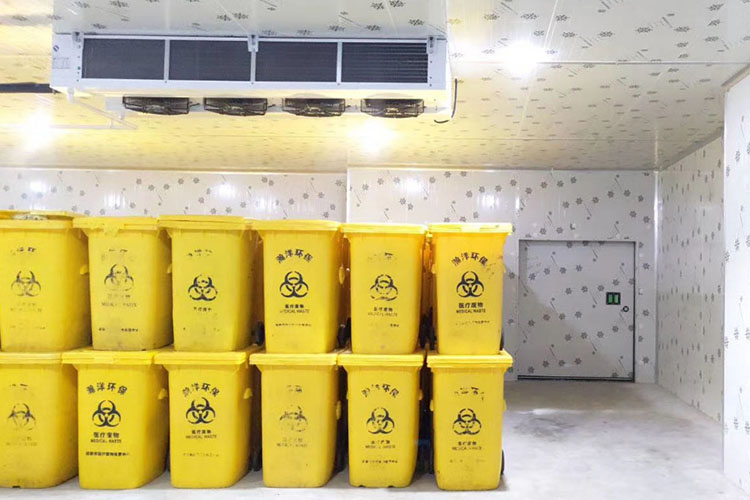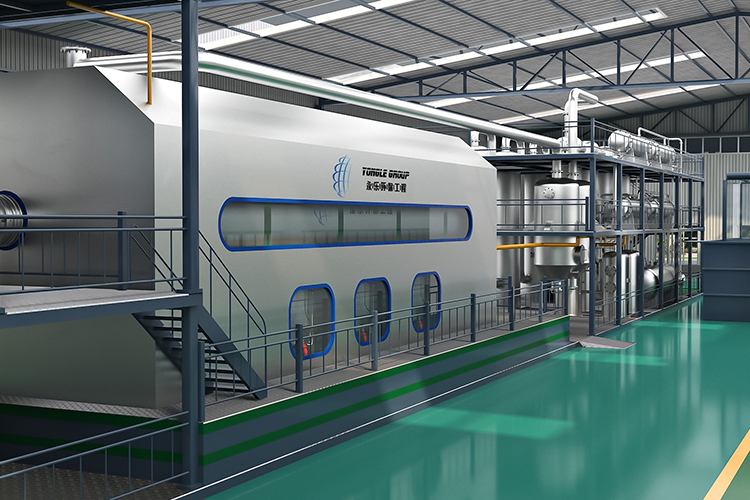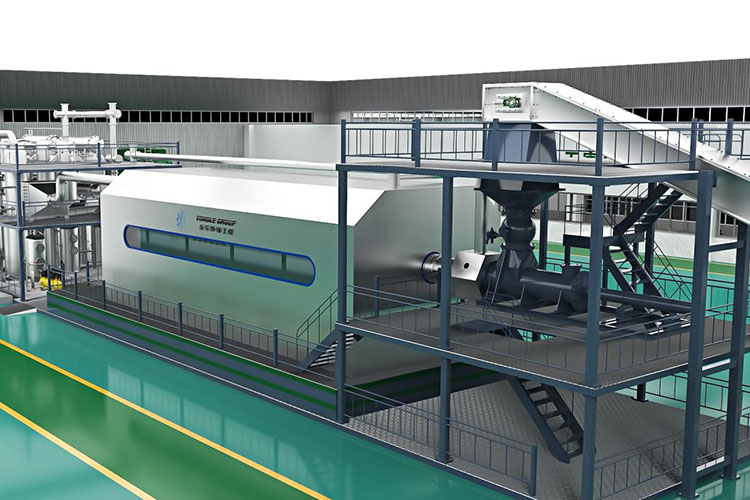Medical waste refers to the waste generated by medical institutions in diagnosis, treatment, prevention, healthcare, and other related activities. These wastes have high biological hazards and, if not properly disposed of, may cause serious public health incidents. Therefore, the treatment of medical waste is particularly important. According to their nature and risks, medical waste is mainly divided into five categories: infectious waste, pathological waste, damaging waste, pharmaceutical waste, and chemical waste. Correspondingly, different types of waste require different disposal equipment and methods to ensure their safe and harmless disposal.

Infectious waste includes the patient's blood, body fluids, secretions, excreta, and contaminated items. This kind of waste contains pathogenic microorganisms and has the risk of causing the spread of infectious diseases. Therefore, the primary goal of handling infectious waste is thorough sterilization and disinfection. The commonly used processing equipment currently includes high-temperature steam sterilization equipment, microwave processing equipment, chemical disinfection equipment, pyrolysis and incineration equipment, and plasma processing equipment. High temperature steam sterilization equipment can effectively kill pathogenic microorganisms through high-temperature and high-pressure steam, and is suitable for the treatment of various high-temperature resistant items; Microwave processing equipment utilizes microwave energy to generate thermal effects, which can effectively sterilize solid and liquid waste; Chemical disinfection equipment kills microorganisms through chemical agents such as sodium hypochlorite and peracetic acid, and is suitable for the treatment of liquid waste and specific solid waste; Pyrolysis and incineration equipment can completely eliminate pathogenic microorganisms and reduce waste volume through high-temperature decomposition and incineration; Plasma processing equipment utilizes the high temperature and active particles generated by plasma to thoroughly decompose organic matter and kill pathogenic microorganisms.

Pathological waste mainly comes from human tissues, organs, pathological sections, animal carcasses and their specimens generated from surgery, pathological dissection, and other medical activities. Due to its unique properties and potential high biological hazards, the treatment of pathological waste typically requires high-temperature and efficient decomposition methods. Pyrolysis and incineration equipment can completely decompose organic substances in pathological waste through high-temperature decomposition, and effectively kill pathogenic microorganisms; Plasma treatment equipment utilizes plasma high-temperature treatment to thoroughly decompose organic matter and kill pathogenic microorganisms, making it suitable for the treatment of highly hazardous pathological waste.
Harmful waste includes medical waste such as injection needles, surgical blades, glass sheets, etc., which pose a risk of stabbing or cutting injuries. This type of waste not only poses a risk of physical injury, but may also carry pathogenic microorganisms. The equipment for handling hazardous waste needs to be able to effectively sterilize and ensure that the physical form of the waste is safely disposed of. High temperature steam sterilization equipment uses high-temperature and high-pressure steam to kill microorganisms and eliminate the physical form of waste from the risk of puncture or cutting; Microwave processing equipment utilizes microwave energy to generate thermal effects and is suitable for sterilization treatment of various harmful waste materials; Pyrolysis and incineration equipment undergo high-temperature decomposition and incineration to completely eliminate pathogenic microorganisms and make waste harmless; Plasma processing equipment utilizes plasma high-temperature treatment to thoroughly decompose organic matter and kill pathogenic microorganisms.

Pharmaceutical waste includes expired, obsolete, spoiled or contaminated drugs, such as vaccines, injections, etc. The chemical components in this type of waste may pose a threat to the environment and human health, therefore requiring special treatment methods. Pyrolysis and incineration equipment can completely destroy harmful components in drugs through high-temperature decomposition, avoiding potential harm to the environment and human health; Plasma processing equipment utilizes plasma high-temperature treatment to thoroughly decompose organic matter and harmful components in drugs.
Chemical waste includes waste containing toxic and harmful chemicals, such as discarded chemical reagents, disinfectants, developer solutions, and discarded chemical packaging materials. This type of waste has high chemical hazards and requires strict treatment to ensure safety. Pyrolysis and incineration equipment decompose harmful components in chemical waste at high temperatures to ensure their harmless disposal; Plasma treatment equipment utilizes plasma high-temperature treatment to effectively decompose and neutralize harmful components in chemical waste; Chemical disinfection equipment is treated with chemical agents and is suitable for specific liquid chemical waste treatment.
In summary, the treatment of medical waste requires selecting appropriate treatment equipment and methods based on its specific nature and risks. By means of high temperature, high pressure, chemical disinfection or plasma treatment, harmful components in medical waste can be effectively eliminated, ensuring that their harm to the environment and public health is minimized. This is not only a responsibility that medical institutions must fulfill, but also an important measure to protect public health and environmental safety.
Yongle Environmental Protection is mainly engaged in the research and development, production and sales of complete sets of technical equipment for organic solid waste disposal and comprehensive utilization. Production and manufacturing, domestic waste treatment equipment, tire pyrolysis equipment, medical waste disposal equipment, hazardous waste disposal equipment, and achieve efficient and comprehensive utilization of resources through independently developed low-temperature anaerobic pyrolysis equipment technology solutions.
Tags:Medical waste disposal equipment and its five major categories of medical waste treatment,medical waste treatment,Yongle Group,Medical waste disposal equipment,YONGLE GROUP
 Latest news
Latest news


























